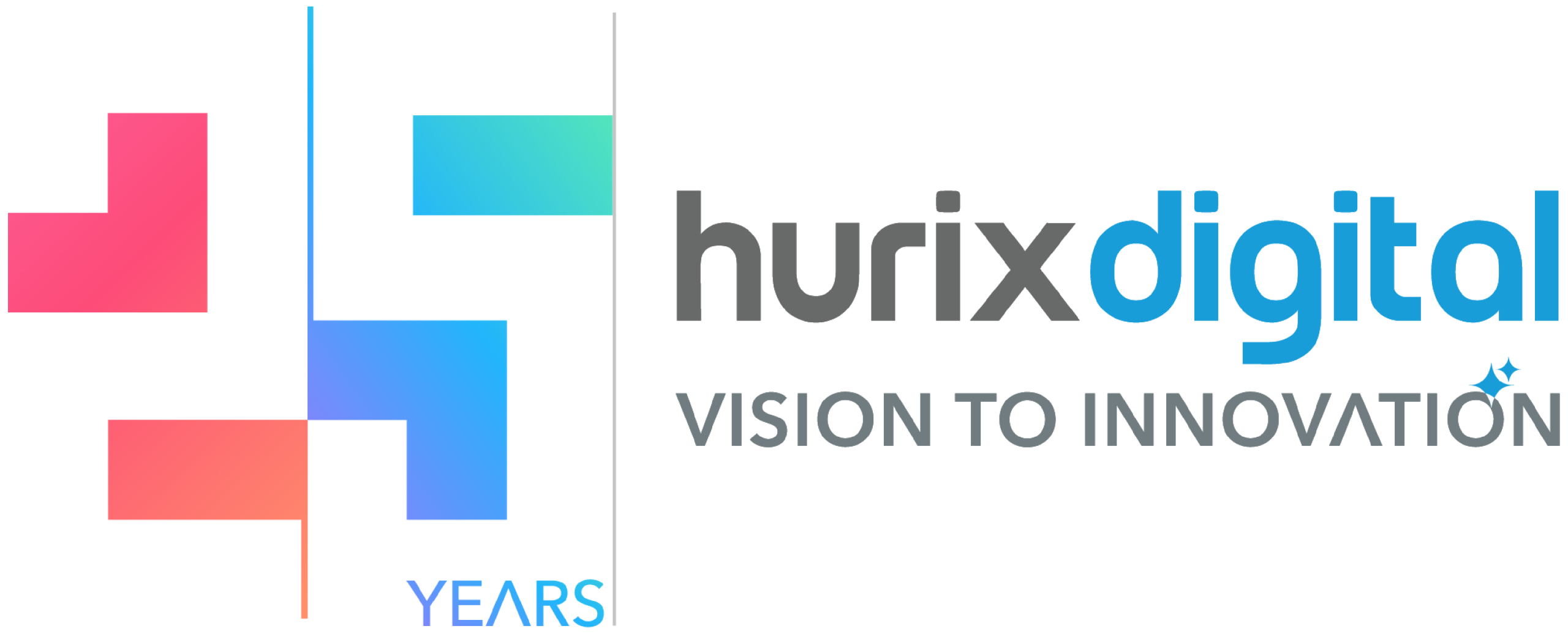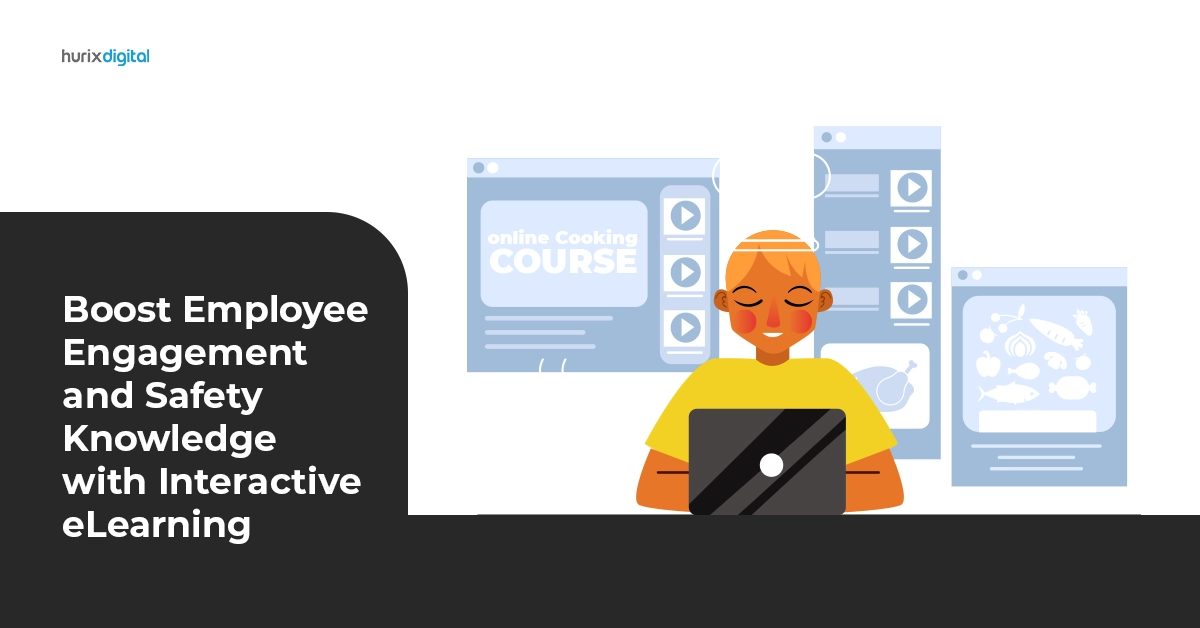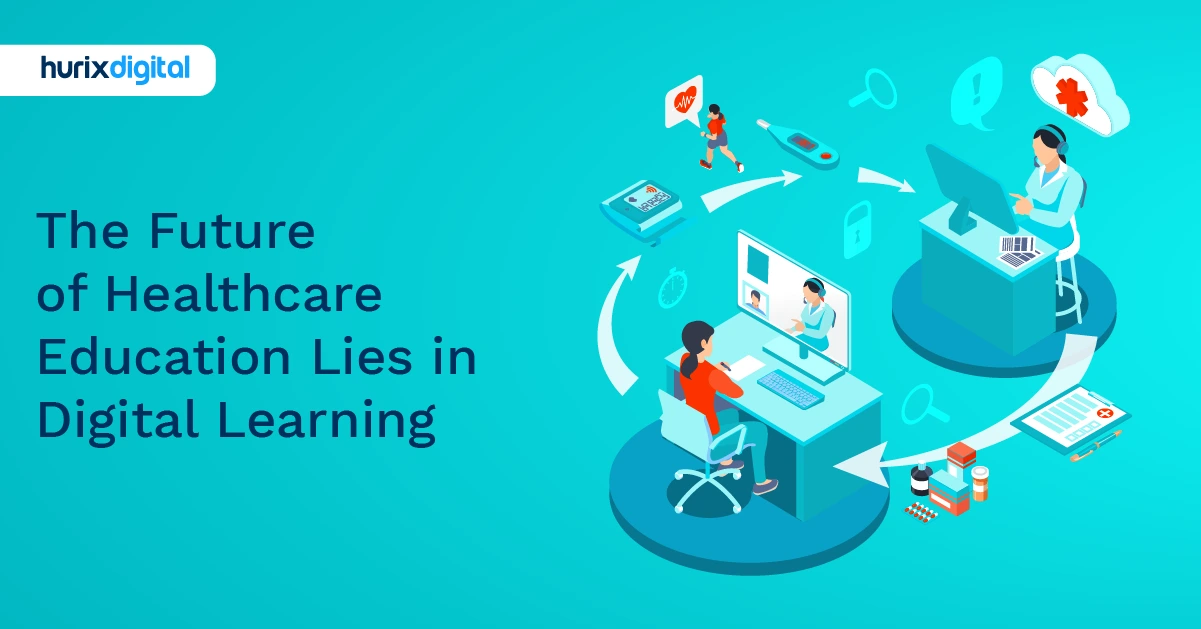
Nitin Sharma
July 12, 2025
The Future of Healthcare Education Lies in Digital Learning
Summarize with:
Table of Contents:
- Need for Healthcare Training
- Revolutionary Impact of Digital Learning in Healthcare Education
- Top 5 Innovative Education Solutions for the Healthcare Industry
- How Digital Learning Helps Provide Top-Tier Healthcare Facilities?
- The Bottom Line
Need for Healthcare Training
Of all the different sectors, the healthcare industry is especially in need of constant teaching and training for quite a few reasons:- Medical science is constantly evolving. Old beliefs are being replaced with knowledge gathered from new research, and new technologies are being invented as we speak. Healthcare professionals need to constantly upgrade themselves to keep up with these innovations.
- With the volume of patients, the current industry is ill-equipped to handle the pressure. The healthcare system needs to be upgraded consistently. For this to happen, the workers need to receive advanced healthcare training, such as lessons on clinical practices, leadership, management, and even education and research.
- Learning in healthcare is not just for newbies. Even those in the middle of their careers, or even those about to reach a ripe end, need to upgrade their knowledge and awareness. The landscape has changed drastically in the last few years, and this is the need of the hour.
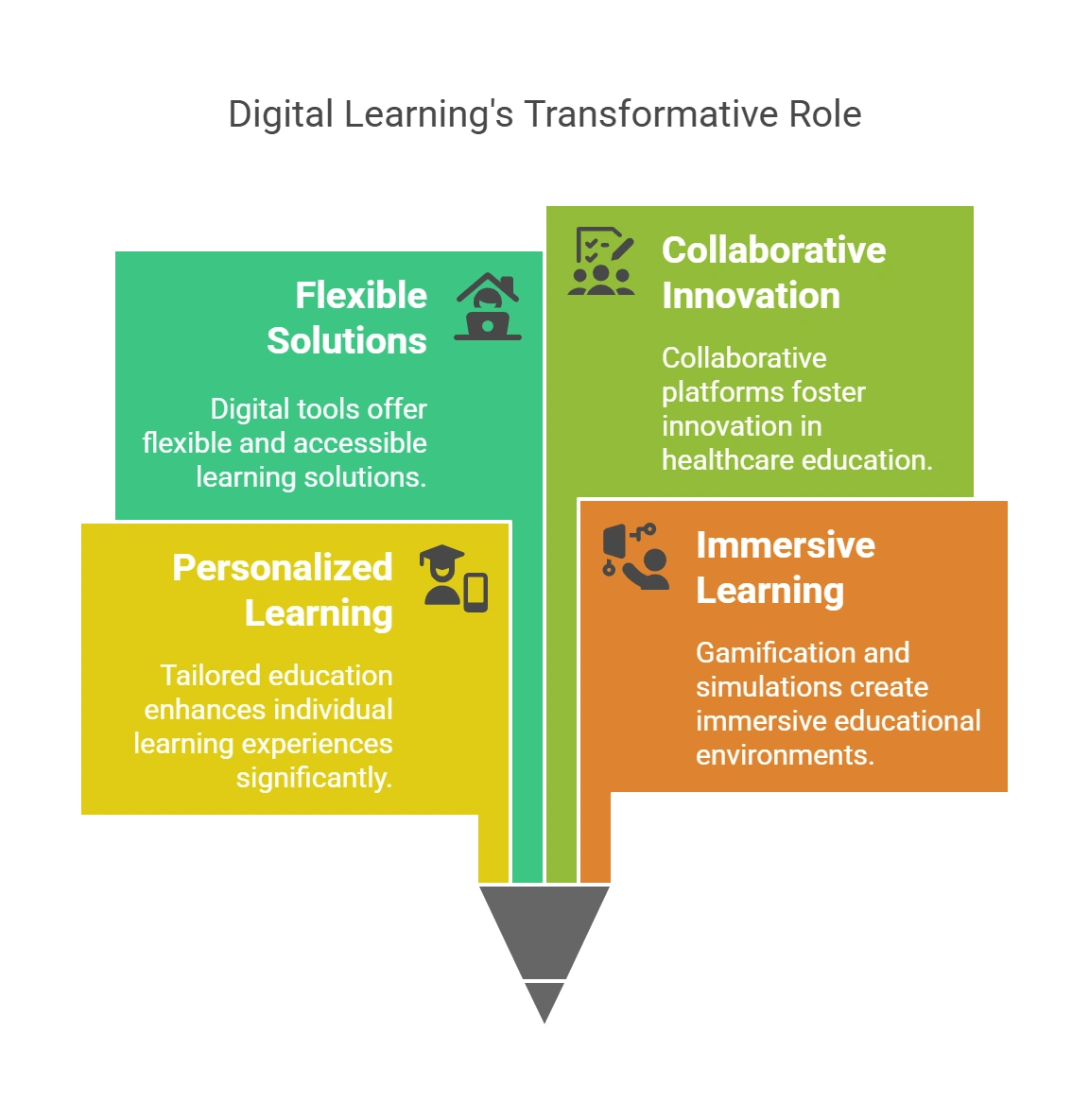
Revolutionary Impact of Digital Learning in Healthcare Education
Digital learning in healthcare is reshaping patient care by nurturing a more knowledgeable, skilled, and connected workforce.1. Personalized Learning and Active Engagement
Digital learning in healthcare excels at simplifying complex concepts through textual and graphic aids. It facilitates clear connections between intricate medical information and readily understood base principles. A World Health Organization report reinforces this, asserting eLearning’s effectiveness is on par with or even exceeds traditional methods. Interactive digital platforms offer a dynamic and personalized approach, replacing passive learning with active engagement. Virtual anatomy programs, for instance, grant 3D explorations of the human body, surpassing the limitations of cadaver dissection. This benefit shines particularly in subjects like anatomy or physiology, where rich visual elements are vital to understanding complex concepts. Digital education content providers embrace this need by incorporating captivating visuals that transform learning into an engaging and enlightening experience.2. Gamification and Simulation for Immersive Learning
Technology redefines medical training, not only through knowledge delivery but also through immersive simulations and engaging eLearning. These immersive experiences, powered by AI and VR, replicate real-world clinical scenarios with stunning accuracy. Simulation-based training programs leverage mannequins and VR systems, creating safe and controlled environments for students and professionals to practice crucial procedures. Educational games transform medical concepts into engaging challenges, boosting motivation and knowledge retention. Interactive quizzes, simulations with branching narratives, and collaborative tasks reward curiosity and critical thinking, turning learning into a captivating adventure.- Sharper Skills: Virtual patient simulations provide hands-on experience, translating theoretical knowledge into practical expertise. Students develop dexterity, confidence, and better decision-making under pressure, preparing them for real-world challenges.
- Reduced Errors: In simulated environments, mistakes are made and lessons are learned without jeopardizing patient safety.
- Engaged Minds: Gamification in healthcare education fuels motivation and breaks down complex concepts into digestible chunks. Students actively participate, learn faster, and retain information more effectively.
3. Flexible and Accessible solutions
Traditional training often clashes with the demanding schedules of healthcare workers. eLearning in healthcare breaks free from these constraints, offering unyielding accessibility that empowers medical professionals to learn anytime, anywhere, on any device.- Life-Saving Knowledge, Always Within Reach: Busy schedules with long shifts and on-call duties often impede healthcare professionals’ access to traditional training. eLearning for healthcare professionals provides instant access to critical training materials, ensuring essential skills and updates are just a click away—even during on-call shifts or late-night study sessions.
- Accessibility Transcends Location: Online platforms melt away geographical barriers. Rural healthcare workers, international students, and even those on remote assignments can tap into a world of medical knowledge, democratizing access to quality education.
4. Collaborative Learning and Innovation
Collaboration and networking, fueled by technology, hold the key to a future of healthcare education where knowledge flows freely, innovation flourishes, and professionals from all corners of the globe unite to shape a healthier tomorrow. eLearning for healthcare professionals fosters the exchange of ideas, questions, and experiences. Students discuss complex cases, educators share best practices, and professionals collaborate on research, building a bridge of knowledge accessible to all. The rise of professional social media platforms empowers healthcare professionals to engage in real-time discussions, share cutting-edge advancements, and network with peers worldwide.- Collaboration promotes the cross-pollination of ideas, challenging assumptions, and enriching perspectives. By learning from diverse voices and experiences, individuals gain a more nuanced understanding of complex medical issues.
- Collaborative platforms ignite the sparks of collective innovation. Healthcare professionals from varied backgrounds can team up, leveraging their unique expertise to tackle pressing medical challenges and develop novel solutions with far-reaching impact.
- Online communities foster a culture of mentorship where seasoned professionals can guide and support aspiring learners. This virtual space offers unparalleled access to expertise, accelerating professional development and promoting a stronger, more connected healthcare workforce.
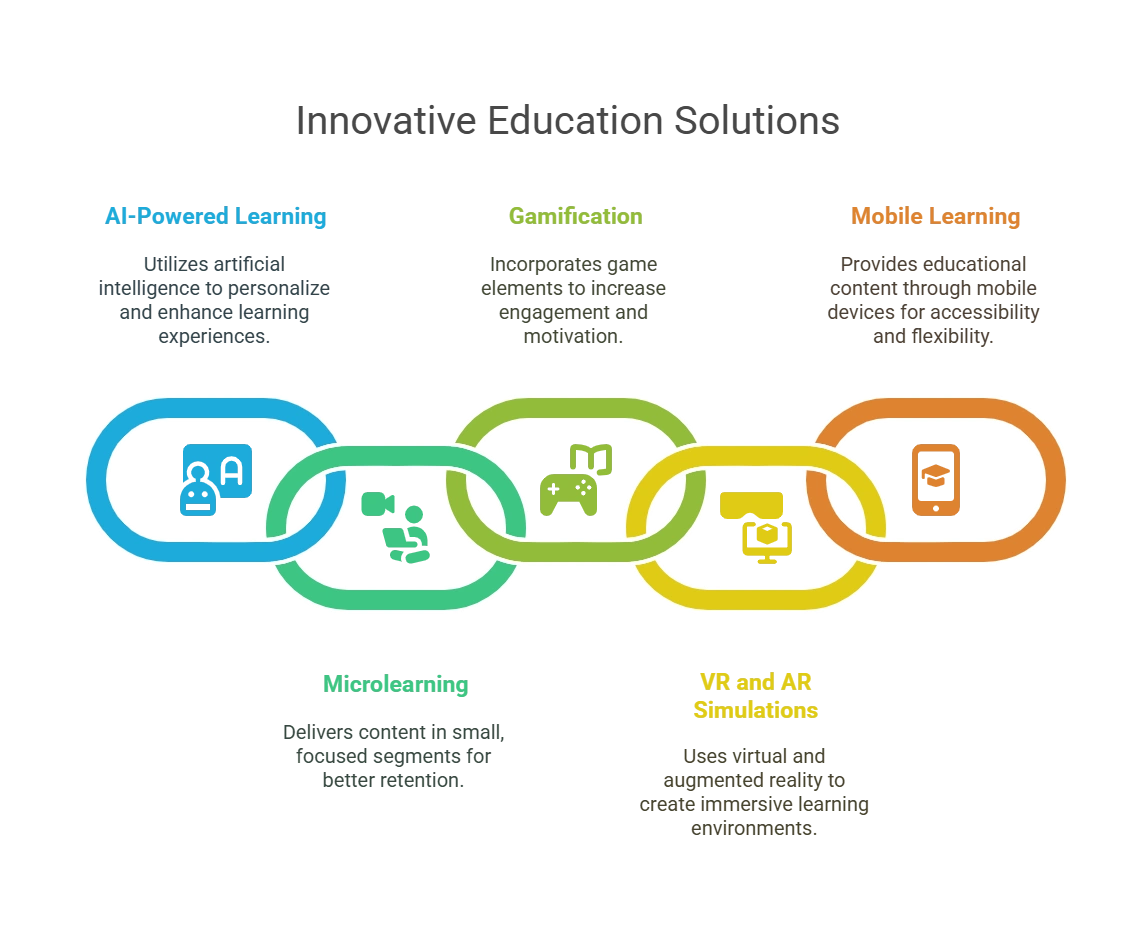
Top 5 Innovative Education Solutions for the Healthcare Industry
The EdTech sector has been booming with innovations galore. The healthcare industry, which has been facing challenges with the rising cost of training its young professionals, can leverage innovative education solutions to largely improve its odds. eLearning in healthcare has the potential to change the odds in its favor. Let’s see the 5 innovative solutions for the healthcare industry:1. AI-Powered Learning
Artificial intelligence and machine learning can create personalized experiences in healthcare training. Using parameters to map a learner’s progress can help individuals progress at a pace that is most comfortable for them. Furthermore, course material and teaching style can be modified to match the learner’s aptitude. AI can also be used in other parts of the healthcare industry, such as diagnostics, patient care, etc. A recent report published by NASSCOM states that AI in healthcare has immense potential and might add $25–$30 billion to India’s GDP by the year 2025. Advanced healthcare training will also include training professionals on AI skills.2. Microlearning
Microlearning is the process of breaking down a larger course into concise and focused segments. This method is ideal for the fast-paced lives of healthcare professionals. The information can be consumed on the go, and professionals find it easy to learn without having to break away from their day-to-day schedule. eLearning effectively employs this technique, making micro-courses and further broken-down modules available to learners conveniently. According to Deloitte insights, learning in the flow of work and life is the most effective way to constantly upgrade skills. A method like microlearning helps professionals achieve this by staying engaged and avoiding mental fatigue.3. Gamification
Gamification is a wonderful technique that uses game design elements in non-gaming contexts to build an engaging system. Its use in education has led to increased productivity as it tends to make learning fun. The same concept can easily be implemented in healthcare workforce development to make the process more enjoyable. This also comes under the learning in the flow of work and life umbrella. Using quizzes, awarding points for completing modules, etc., can keep professionals engaged and give them the much-needed incentive to complete their training willingly, without it feeling like a burden.4. VR and AR Simulations
Virtual and augmented reality are being used every day to provide an immersive experience in training and treatment in the healthcare industry. The use of virtual simulation has improved accuracy and efficiency in surgeries. Virtual simulation allows healthcare professionals to learn and practice a wide range of technical and non-technical skills in a safe and controlled environment. The experience prepares would-be professionals for real-world medical situations. Compared to traditional training, this improves outcomes while fostering critical thinking.5. Mobile Learning
With the rise of smartphones and tablets, mobile learning has gained significant importance. In healthcare, professionals have a tight schedule and are usually unable to find a dedicated window for their training. In such a scenario, the flexibility of mobile health training is a godsend. Mobile learning also makes things more accessible for people who struggle to maintain a work-life balance. It is even accessible during commutes, ensuring proper utilization of time. With the rise in mobile healthcare as well, utilizing this technique in healthcare training seems like the obvious next step.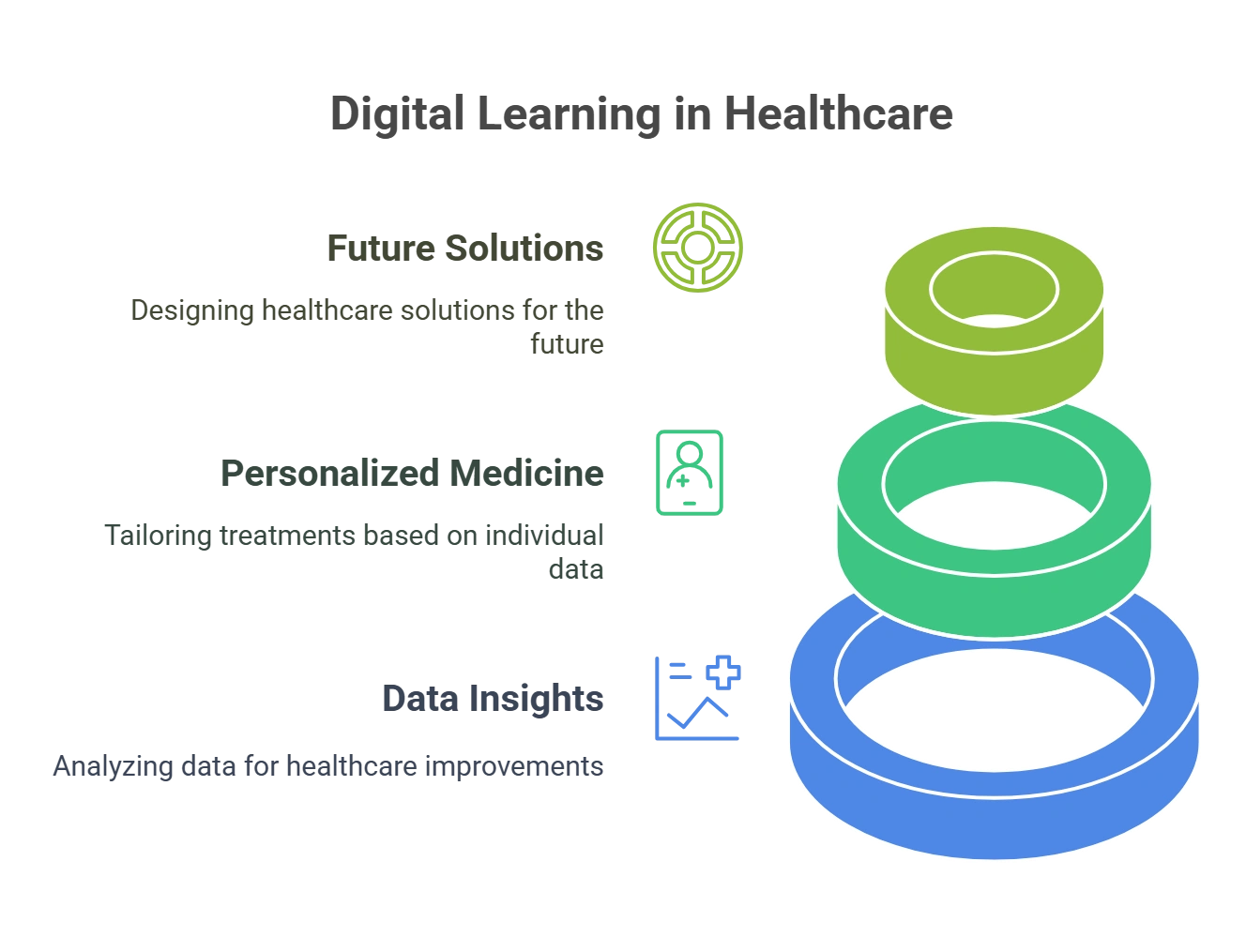
How Digital Learning Helps Provide Top-Tier Healthcare Facilities?
Advancements in digital learning in healthcare unlock the doors to transformative research and innovation, ushering in a new era of personalized medicine, AI-powered breakthroughs, and data-driven discoveries:1. Data-Driven Insights
Sophisticated tools analyze vast datasets, revealing hidden patterns and correlations unseen before. It enables researchers to delve into genomics, uncovering the secrets of genetic predisposition and paving the way for personalized medicine.2. Personalized Medicine for Targeted Treatments
Technology becomes the architect of bespoke healthcare by enabling the analysis of individual genetic profiles and treatment responses. It allows for the development of targeted therapies and preventative measures, ushering in a new era of personalized medicine.3. Diagnosing, Predicting, and Designing Solutions for a Healthier Tomorrow
Powerful artificial intelligence algorithms process complex medical data, assisting in diagnoses, predicting disease outbreaks, and even designing innovative drug therapies. This human-AI collaboration promises to accelerate research and propel medical advancements at an unprecedented pace.- Faster Discovery to Treatment: Technological advancements in healthcare shorten the timeline from discovery to application, bringing life-saving innovations to patients.
- Precise and Preventive Healthcare: Personalized medicine leads to more effective treatments with fewer side effects, while AI-powered disease prediction paves the way for preventative measures and improved patient outcomes.
- Empowered Future Healthcare Professionals: Medical students graduate equipped with the skills and tools to navigate the ever-evolving landscape of medical research and innovation.
The Bottom Line
The walls of physical classrooms have fallen, replaced by a boundless, virtual learning landscape. As digital learning continues to weave its transformative threads through healthcare, the picture that emerges is one of unparalleled potential. By integrating digital tools into training programs, we can empower our staff and equip them with the skills and knowledge needed to navigate the ever-evolving complexities of modern medicine. Hurix Digital stands among the foremost digital education content providers, offering customized learning modules tailored to your training objectives and ensuring targeted improvement for your staff. We collaborate closely with you, prioritizing your specific requirements, budget constraints, and timelines to guarantee on-demand success.Summarize with:

Senior Vice President
A Business Development professional with >20 years of experience with strong capability to sell new solutions and develop new markets from scratch. New Market Entry Specialist with experience working in the largest emerging markets. Exceptional experience in conceptualizing, ideating and selling new learning technologies like VR AR, etc. across multiple industry verticals.
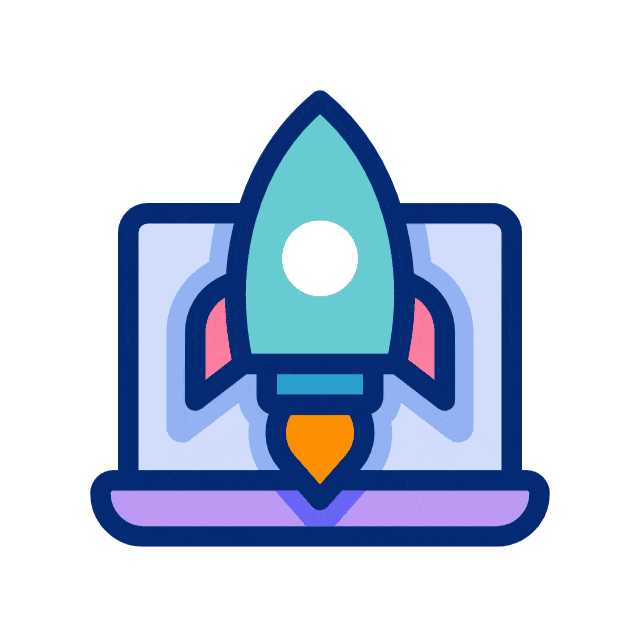 A Space for Thoughtful
A Space for Thoughtful 